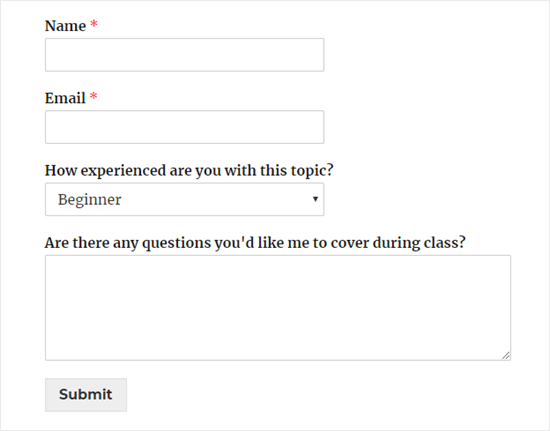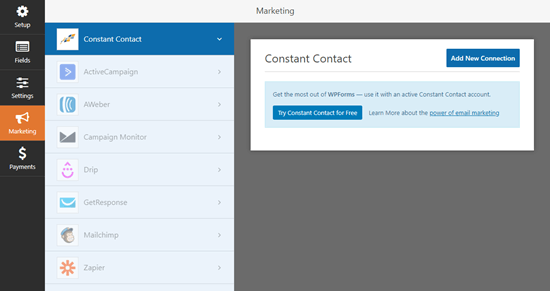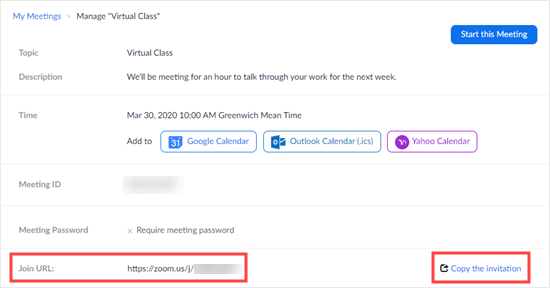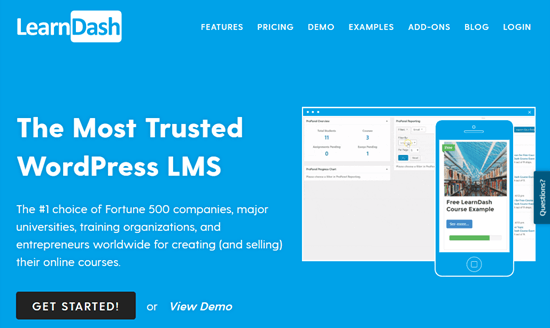Are you a yoga teacher who wants to teach your classes online? While it might seem complicated, it’s actually pretty easy to do.
Lots of yoga teachers are holding live classes daily. And others are offering yoga courses online that people can do at their own pace.
In this article, we’ll show you how to teach online yoga classes with some simple, yet powerful tools.
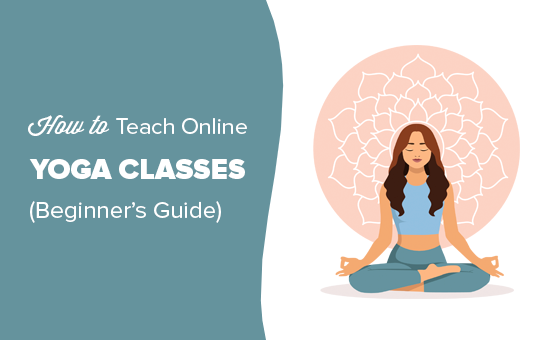
When you teach yoga online, you can reach people all over the world. Instead of going to a studio, you can work from anywhere. Yes, even your living room.
If you want, you can also sell your own yoga memberships and products. This way you can make money without having to stream live classes on a regular schedule.
How to Take Your Yoga Classes Online
Starting online yoga classes may sound too technical. However, there are excellent tools available that you can use without learning any special skills.
To take your yoga classes online, you’ll need these 4 things:
- A website or platform to teach yoga live and/or to sell products
- Video streaming to lead your classes
- A way to take payment
- A method for your customers to sign an agreement
To sell your yoga products outside of the live classes, you’ll need:
- A membership site to host your yoga videos and products
- An email marketing service to deliver your products and to stay in touch with customers
We know there’s a lot here. But don’t worry, we’ll walk you through all the tools you need to get started teaching online yoga classes.
Here’s a list of topics we’ll be covering. You can jump to any section you’d like in the article.
- Create Your Platform to Teach Online Yoga Classes
- Creating Pages for Your Yoga Site
- Taking Payment and Agreement Signatures
- Sell Yoga Classes Online with a Membership Site
- Easily Communicate with Your Customers
- How OptinMonster can Help You Get More Customers
- Final Thoughts for Teaching Yoga Online
Transparency disclaimer: At WPBeginner, our content is reader-supported. This means we earn a referral fee whenever you click on some of the links in this article. We only make recommendations for products we use and believe will provide value to you. You can check out how WPBeginner is funded for more details.
Create Your Platform to Teach Online Yoga Classes
People are teaching yoga online in various ways.
Some are live-streaming their classes on YouTube. And others are doing Instagram lives at set times during the week.
While these are easy options, the problem here lies in what could happen to your platform. You don’t have full control over your YouTube or Instagram account. If your account got deleted, it could be hard to get it back online
Plus, you can’t communicate directly with your customers because of how the algorithm controls who sees your feed. Knowing this, we’ve put together some ideas for you.
If you want to offer live yoga classes, you need an easy-to-use video service.
We recommend Zoom. With the free version, you can have up to 100 participants on your live stream. The primary drawback is a 40-minute time limit.
So, if you wanted your classes to last longer, their plans start at $14.99/month.
Next, you’ll need a platform where users can learn more about your classes and sign up.
Instead of using a third-party platform that takes a cut of every transaction, we recommend making your own website using WordPress.
The benefit of this option is that you’ll not be paying a cut on every transaction to a third-party. You’ll also have a lot more freedom to grow your business any way you like.
To create your yoga website, you’ll need to set up a domain name and web hosting.
To host your site, we suggest going with Bluehost. Not only is it a WordPress recommended host, but they give WPBeginner readers a nice discount when signing up for your first year.
It’s just $2.75/month, plus you get a free domain name with your account.
Another host we recommend is SiteGround. They even offer an automated WordPress installation so you can get your site up and running as soon as possible.
Would you rather skip this process and just get to work on your site? If so, check out our free WordPress blog setup service.
Once you’re up and running with your yoga website, it’s time to create some pages.
Creating Pages for Your Yoga Site
For starters, you only need a handful of pages.
Those are:
- An about page
- A services page
- A yoga classes page
- A sign up and payment page
- A contact form page
By the way, you’ll probably want to set up more pages later. Here’s a guide to the important pages every WordPress site should have.
Your ‘about’ page is where you tell us a little bit about yourself. What makes you an expert? How’d you get into yoga? This is typically where teachers put a photo of themselves, too.
The ‘services’ page is where you describe what you do and what you offer.
Your ‘yoga classes’ page is where you can put the dates and times of your online yoga classes. You can list all the details, such as:
- Start time
- Duration
- Type of class
- Experience level
- Any other pertinent information
Finally, you need a page where users can sign up and make payments.
Taking Payment and Agreement Signatures
First, you need to install and activate the WPForms plugin. For more details, see our step by step guide on how to install a WordPress plugin.
You’ll need the Pro version, to accept payments online. The Pro version also comes with dozens of form templates, email newsletter forms, entries management, and more.
WPForms allows you to accept payments using Stripe and PayPal. For step by step instructions, see our guide on how to how to easily accept credit card payments on your WordPress website.
Now, you can add the form to your payment page. It will look something like this:
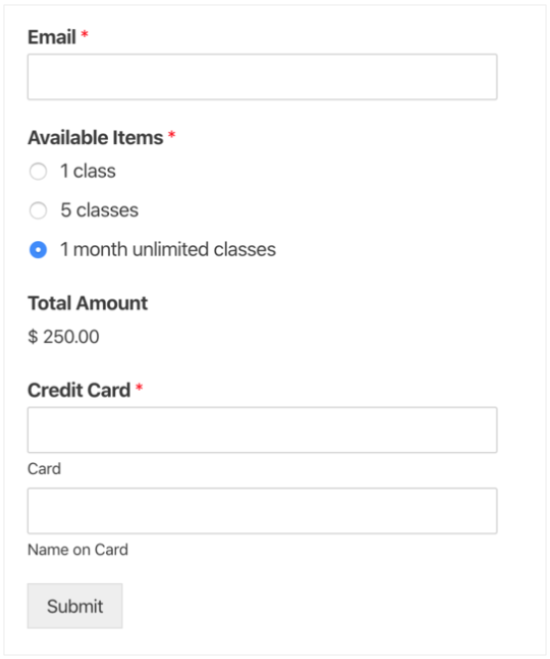
You can also use the WPForms signature addon to create an agreement form that your yoga students can sign digitally.
For detailed instructions, see how to create a contract agreement form with digital signatures.
Sell Yoga Classes Online with a Membership Site
Traditionally, you only get paid when you teach a yoga class. That means two things:
- Your income is dependent on how many classes you teach per week
- How much you make depends on your class rate and availability
So, if you want to make more money without having to do more classes, you could offer courses or products on a membership site.
We recommend the MemberPress WordPress plugin when creating a membership area for your site. It is the best WordPress membership plugin in the market.
With this plugin, you can easily create custom packages, and restrict access based on purchases.
For example, you could create 3 courses based on experience levels. Those levels could be:
- Beginner
- Intermediate
- Advanced
Let’s say someone buys your beginner course. This means they would only have access to the pages you label under the beginner membership level.
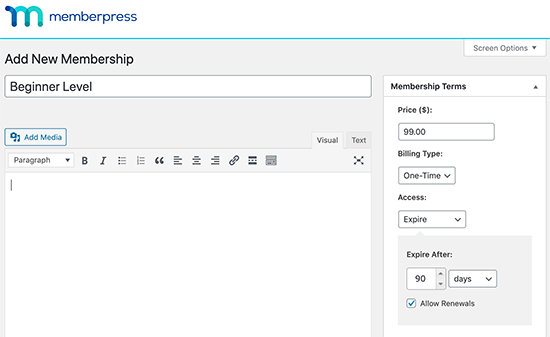
But if they bought your beginner course and your intermediate course, they would have access to both areas when they log in.
This way, your products are protected from those who aren’t paying for them.
Since you’re teaching yoga online, you’re likely using video for instruction and demonstration. You’ll need an easy way to host your videos in your membership area.
Note: You should never upload videos to your WordPress site directly because video files are large and can slow your site down.
Instead, you could host them with Vimeo and choose their basic option. Then you’d simply embed them into whatever pages you want.
For more instruction, let’s walk you through how to create a membership site.
Easily Communicate with Your Customers
Not all users coming to your website will sign up for your class. In fact, 70% of those users will never come back.
This is where you need to start building an email list. This allows you a chance to capture those users’ email addresses, offer them discounts, or reach out to them with new offers.
The easiest way to do this is with Constant Contact. It is the best email marketing service for small businesses and it is also the most beginner-friendly.
The best part is that it integrates both WPForms and MemberPress, which makes it easy to create your newsletter sign up forms.
For more details, see our guide on how to start an email newsletter with step by step instructions.
If you are looking for a free option, then Sendinblue or MailerLite both offer limited free plans.
How OptinMonster can Help You Get More Customers
As we mentioned earlier, more than 70% of users will leave your website. Those who stick around, only a small fraction of them will end up making a purchase.
This is where OptinMonster comes in. It is the best lead generation software on the market and helps you convert website visitors into subscribers and customers.
It comes with beautiful lightbox popups, countdown timers, slidein forms, and other tools to help boost your conversions and sales.
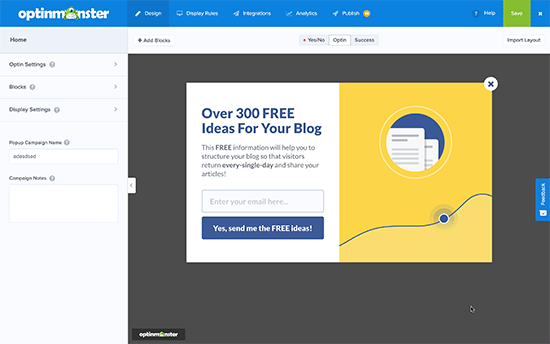
For more details, see our guide on quick ways to grow your email list.
Final Thoughts for Teaching Yoga Online
We’ve given you a lot to think about in this article, so let’s recap. You can start offering yoga classes online with a WordPress website. All you need is a domain name and WordPress web hosting.
You can host live classes using Zoom. And you can record those classes to sell later if you want.
Then you can install WPForms to collect payment and have your agreement form signed digitally.
To make more money without holding more classes, you can easily create a membership site with MemberPress. You can sell courses for people to do on their own, or sell recordings of live classes you hold during the week.
And to stay in touch with your customers, email marketing software is a must. Constant Contact is a great way to get started.
We hope this article helps you learn more about how to teach yoga online. You might also like our guide on the best WordPress themes for membership sites.
If you liked this article, then please subscribe to our YouTube Channel for WordPress video tutorials. You can also find us on Twitter and Facebook.
The post How To Teach Online Yoga Classes with WordPress appeared first on WPBeginner.






